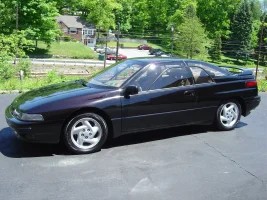Turd Ferguson
New Member
- Joined
- Oct 5, 2024
- Messages
- 1
- Reaction score
- 1
- Points
- 3
I am often surprised when watching my turbo gauge how it sometimes indicates very little to no turbo pressure even when I’m giving it more throttle and making it work a little. It kicks in when it’s supposed to and t’s operating normally, so I have no concerns.
What I find interesting is how strong the motor seems BEFORE the turbos engage. This brings me to my question: How much power would the engine produce if it was not fitted with twin turbos?
Any input appreciated.
I recently got a ‘22 GT2 Scorpion in Aurora Black. Loving it.
What I find interesting is how strong the motor seems BEFORE the turbos engage. This brings me to my question: How much power would the engine produce if it was not fitted with twin turbos?
Any input appreciated.
I recently got a ‘22 GT2 Scorpion in Aurora Black. Loving it.





